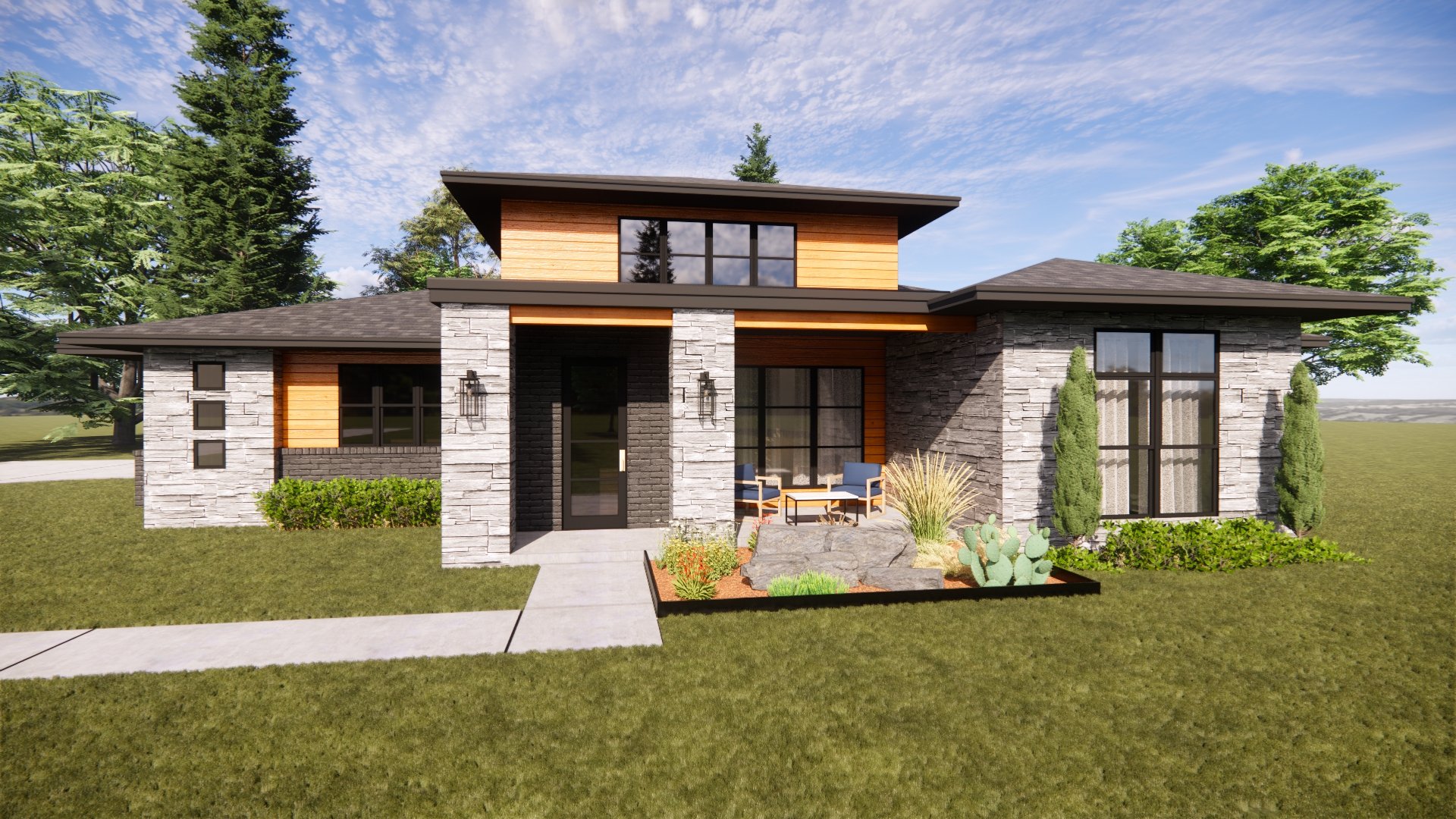Remodeling Your Home to Age in Place and 5 Tips to Get Started (2024)
Remodeling to age in place remains a popular request with our clients. We also see clients wanting to design their new construction custom homes with aging in mind.
Creating plans to age in place gracefully is not just for “old people.” You have a lot of time, money, memories, and energy invested in your home. Creating a home that allows you to age in place means your home will grow with you, you can be comfortable as you age, and you’ll be assured that you have a forever home that will accommodate you no matter what happens.
Many folks in Oklahoma are choosing to age in place rather than move to a retirement home or assisted living community. Planning for the future in this way will help you feel confident as you age and allow you to spend your later years in your own house with the grace, dignity, and independence that you deserve.
Here are 5 tips that we’ve generated to help you get started planning your custom home remodel to age in place.
If you are considering remodeling your home to age in place, be sure to read until the very end for our very best tip. We’ll also tell you how the experts at Creative Home Designs can help you remodel your home to be the best place to spend your retirement.
Widen Doorways and Hallways
As vision and mobility issues arise, begin your age in place remodeling journey by measuring the hallways and doorways in your home. Expanding your hallways and doorframes to accommodate wheelchairs and walkers will give you a solid foundation to begin your journey to aging in your home.
Expanding hallways and doorways does mean knocking down parts of your existing structure. Consult an expert, like the ones at Creative Home Designs, who can examine your home’s blueprint to ensure that these structural adjustments won’t compromise the integrity of your home. Since these renovations can be extensive and pricey, we recommend starting here.
How Wide Should the Hallways in my Home Be?
Hallways should be at least 36 inches, but a wider hallway is preferred. If you can eliminate long hallways in your home, we recommend doing that. A professional can help you accomplish this by reviewing your home’s existing structure and blueprints and suggesting adjustments where they are needed. Long hallways make it more daunting to get around and don’t allow a resting space for those with increased mobility concerns. Long hallways also make it tricky to turn around in a walker or a wheelchair. Make sure you’ll have a 5-foot by 5-foot turn-around clear/turn space in your living room, kitchen, dining room, bedroom, and at least one bathroom.
How Wide Should the Doorways in My Home Be?
Doorways in the home should have at least 32 inches of clear width, requiring a 36-inch door. Choose flush thresholds for best results.
For the exterior, thresholds should be a maximum of ½ an inch, beveled.
For the interior, if you need a beveled threshold, choose ones that are a maximum of ¼-inch.
Choosing flush, or low, beveled thresholds will help keep mobility in the house stress-free, especially when using a wheelchair or walker.
Flooring or Anti-Slip Mats
Flooring can quickly add up, becoming one of the more expensive remodeling aspects, depending on the square footage of your space and the price per square foot of the materials you use.
If you choose to expand your doorways and hallways, this may also be the optimal time to remodel the flooring in your house throughout. When considering flooring options, keep mobility and slip-factors in mind. One great option for flooring here is low-pile carpeting or vinyl flooring, which comes in slip-resistant finishes.
When choosing tiles, look for ones with higher friction value to provide better traction (0.6 or higher according to Americans with Disabilities Act guidelines).
Another option would be to keep your lovely laminate or hardwood and add slip-resistant mats or low-pile rugs for footing.
Handrails and Stairwells
Handrails
Install handrails in areas like the hallways, near the bathroom toilet, and in the bathtub or shower. Other areas where you’ll want to install handrails are in entry areas, on ramps, or near stairs.
Use adequate hand railing on both sides of your stairs. Hand-railing should each be one and a quarter inches in diameter.
Stairwells and Elevators
The best case scenario is having a home that is just one level, but if that cannot be accomplished, make sure that you have at least one full bathroom and one bedroom on the first floor. If that’s not possible, consider installing a chair lift (or making sure there is space for one should the need for it arise at a future time).
Another possibility is installing an elevator. Installing an elevator could cost tens of thousands of dollars, but may be less costly than remodeling the entire home or relocating to a one-level home.
If you don’t need a chair lift or an elevator, adding contrast strips on the top and bottom of each step may be just what you need to prevent a fall on the stairs.
READ OUR BLOG: Aging In Place: 4 Tips for Retiring In a Two-Story Home
Customize Countertops and Add Kitchen Storage
Kitchen Countertops
Give thought to adding a workspace in your kitchen where you may sit down to prepare food. Multi-level workspaces can be added to accommodate cooks of any height. A raised dishwasher with push-button controls can make loading the dishwasher easier on the back.
Add pull handles where you can and add task lighting where appropriate. An electric stove is a good option for the kitchen because it provides a flat service. If you are purchasing a new stove, make sure there is a warning light to notify users of hot surfaces.
Kitchen Storage
Focus on lower kitchen storage. Add lazy susans and cabinets with roll-out trays. Pull-down shelving is useful here as well.
For your most-used items, open shelving is great for an easy-to-reach storage system.
Upgrade Your Toilet and Shower
Toilet
Choose a toilet that is 2 and ½ inches higher than the standard toilet. A higher toilet will make it easier to stand from seated. Another option here is to add a bidet for easy cleanup.
Add bracing in the walls next to your toilet, tub, shower, and shower seat so that grab bars can be installed. You will want the grab bar to be able to support 250-300 pounds.
Shower
Add grab bars to help you enter your shower and a grab bar next to your shower seat. Choose a handheld shower head with a six-foot hose. Make sure your tub and shower controls are not positioned directly under your showerhead so they can be turned on and off without getting wet.
Add a shower bench or a fold-down shower seat. Use slip-resistant flooring in your shower space and eliminate any curbs or thresholds that need to be crossed to enter the shower.
Walk-in bathtubs are also an option but the user is required to enter the tub, shut the door, and wait for the tub to fill up to use it. When exiting the tub, the user will need to wait until the tub is empty to open the door. Due to these constraints, walk-in tubs may require widening pipes to increase the water flow to and from the tub.
You may also consider converting your bathroom to a wet bathroom. You can read all about wet bathrooms and their benefits here.
Lighting, Doorknobs, and Other Fixtures
Lighting
Make sure your stairwells, hallways, and the entrance of your home have adequate lighting. Add lighting fixtures wherever you may need them. Under-counter lighting in the kitchen is a great option here as well.
You can add motion-sensitive lights that turn on when you enter a room. Update closets or spaces with pull-string lighting to work on a switch instead. Lower your light switches and raise electrical outlets where you can, to make these amenities more accessible.
Door Knobs
Eliminate any door knobs, which may be tricky for those with arthritis in their hands. Choose door levers instead of knobs. You can add a pass-code deadbolt lock to replace a traditional lock. The pass-code can be updated at any time. This simple fix will help prevent the need to fuss with keys upon entry into your home.
Other Fixtures
Choose fixtures that are easy to use. Use levers at the faucet instead of traditional kitchen sink knobs. Add a pull-out spray faucet or upgrade to a touch-less faucet.
Another great idea is to add a fruit rinser to the left of your sink for easy accessibility. Fruit rinsers installed in the back of the sink may be difficult to reach. Install anti-scalding temperature controls on any sink in your home to prevent burns.
Our Bonus Tip For Aging In Place
Add a Mother-in-Law Suite
Adding a Mother-in-Law Suite is a clever idea for those choosing to age in place. This space can house a caretaker or can be used to generate rental income during retirement. It could also double as a guest suite for visiting or live-in family members.
Let Creative Home Designs Help!
Let the professionals at Creative Home Designs guide you through aging gracefully in your home by planning a home remodel or new construction just for you and your needs!
If you are choosing to remodel, we will visit you on-site, take measurements of your home’s existing structures, and study the blue plan so that we can make considerations for widening hallways and doors. We will then sit down with you to create a plan for your home remodel.
We can even connect you with respected home builders in the area due to our extensive network of Oklahoma providers.
Let us help bring your vision to life so you can relax and enjoy your retirement years! Schedule a consultation to create your house designs in Oklahoma City or Tulsa, Oklahoma by calling 405-270-6417 today, or contact us using the form here! You can also click here to take a look at some of the unique home plans we’ve dreamed up for our past clients.








